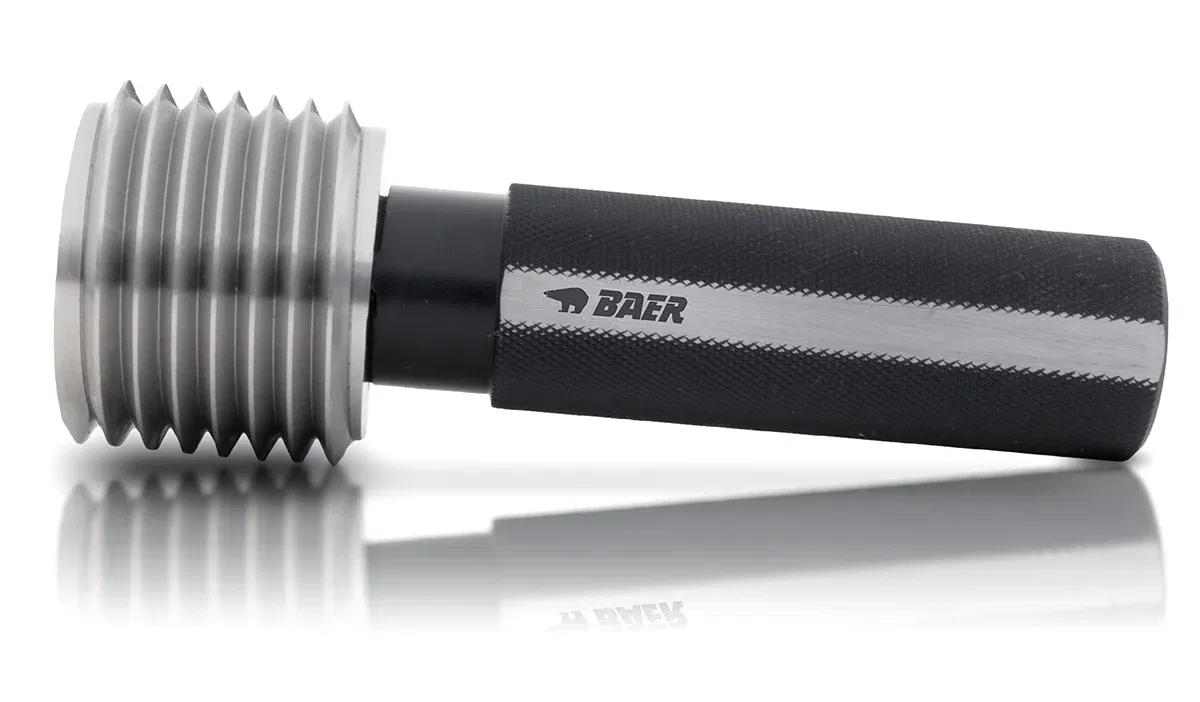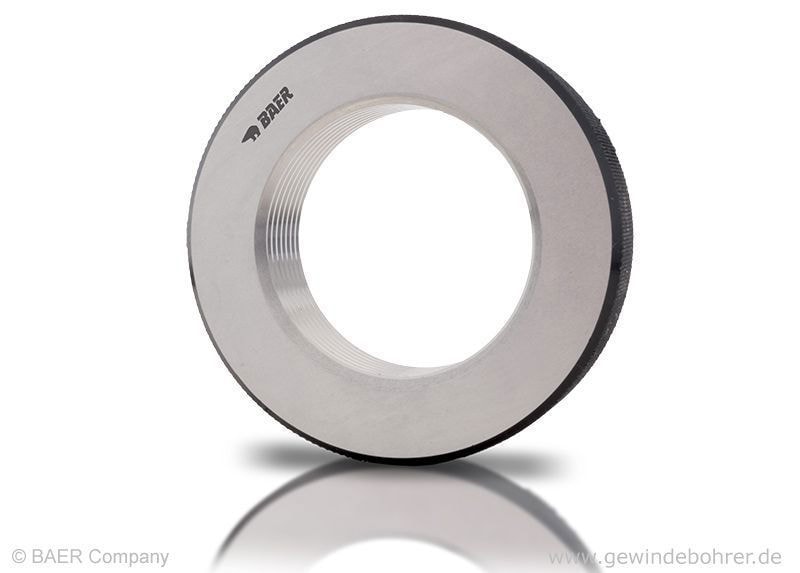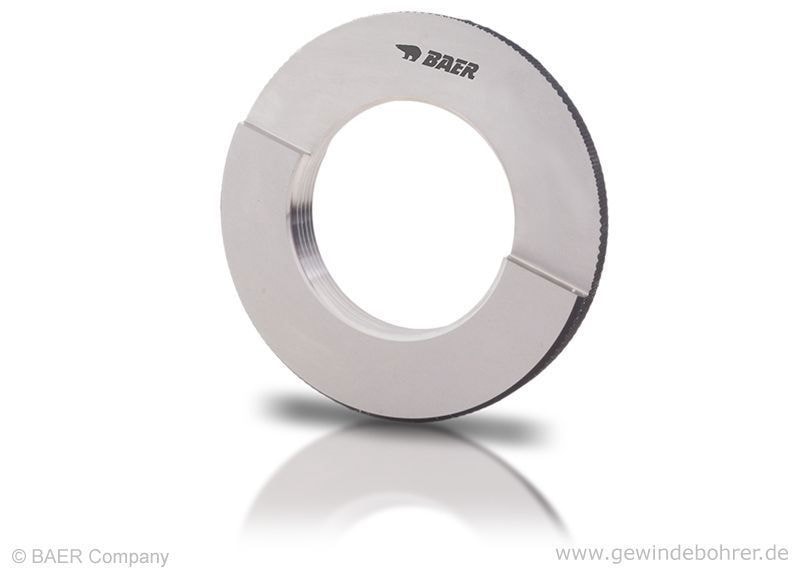Moyens de contrôle ou instrument de mesure : Les subtilités de la technologie de mesure
Avant d’entrer dans le vif du sujet, examinons d’abord de plus près les bases de la technologie de mesure. Il s’agit ici de déterminer si une pièce atteint la dimension nominale requise. Comme souvent, plusieurs méthodes permettent d’y parvenir.
Vous pouvez bien sûr simplement mesurer. Pour cela, il vous faut un instrument de mesure, c’est-à-dire une règle, un mètre ruban, un pied à coulisse ou un outil similaire. Vous comparez ensuite les dimensions de l’échantillon d’essai et obtenez une valeur mesurée numérique.
Le contrôle par jauge fonctionne différemment. Le résultat n’est pas une valeur numérique, mais une catégorisation en bon ou rebut. Cette méthode ne permet donc pas de déterminer les dimensions exactes d’un filetage. Elle présente toutefois l’avantage d’être relativement simple à appliquer et de minimiser les erreurs d’utilisation. Là où rien n’est mesuré, il ne peut pas y avoir d’erreur de mesure ou de lecture. Le résultat est clair et ne laisse guère de place à l’interprétation.
Ajustement, tolérance et autres : à quoi sert réellement la jauge ?
Vous avez probablement déjà remarqué des indications telles que H7 ou H8 sur vos tarauds ou autres outils. Il s’agit de spécifications de tolérance. Elles indiquent les valeurs entre lesquelles les dimensions exactes d’un composant peuvent varier sans compromettre l’ajustement correct entre le filetage externe et interne.
Vous pouvez utiliser un calibre de filetage pour vérifier si cette tolérance est respectée, c’est-à-dire si le filetage est conforme. Cela vous permet, en tant que fabricant, de garantir la qualité irréprochable de vos produits et, puisque le système est normalisé selon la norme DIN, d’être également juridiquement en sécurité. Surtout dans le domaine professionnel, il est toujours judicieux de vérifier régulièrement la conformité des filetages produits afin de prévenir d’éventuelles réclamations de la part des clients.






